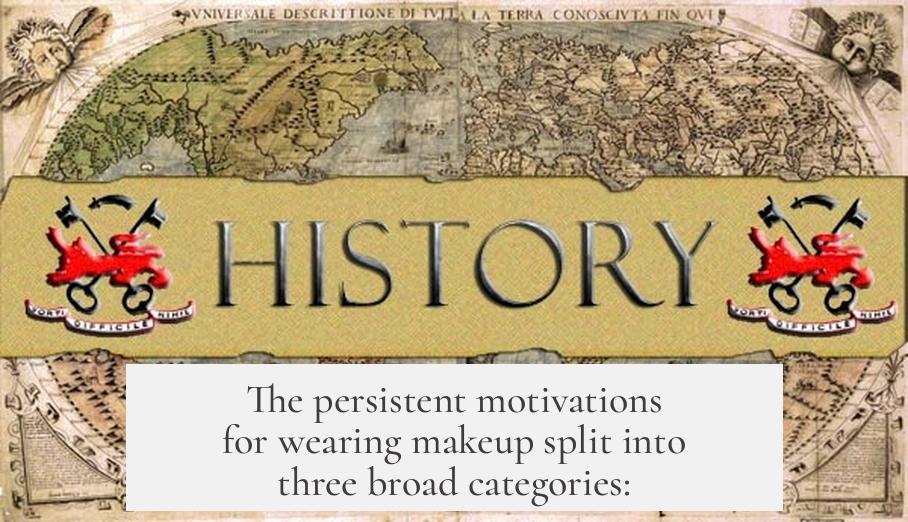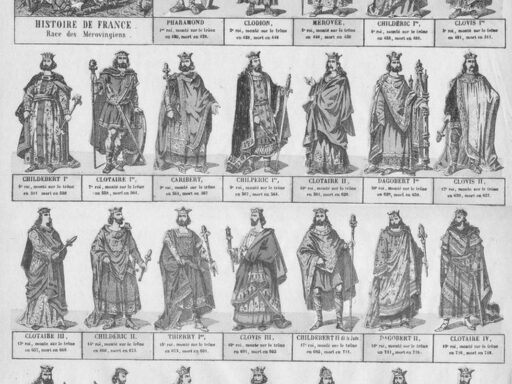Women start wearing makeup as early as prehistoric times, though precise dating remains unclear. Makeup emerges from practical, aesthetic, and social needs that span ancient civilizations to more recent eras.

Determining an exact origin of makeup use proves difficult. Prehistoric cultures likely used natural pigments for body decoration, but no definitive artifacts or records survive. Archaeological finds, such as red ochre in Cro-Magnon graves, suggest early cosmetic practices dating back tens of thousands of years. These remains hint that makeup served symbolic or ritualistic functions among early humans.
Ancient Egypt provides the clearest evidence for early cosmetic use. Both men and women wear makeup daily, emphasizing dark, enlarged eyes through kohl eyeliner. This makeup does more than beautify; it lessens glare from the intense desert sun and offers protection against insects and skin disease. Archaeological finds, like the Palette of King Narmer from around 3100 BCE, display tools for cosmetic preparation. Such artifacts suggest that makeup plays integral roles in health and identity.

In Roman antiquity, cosmetics remain widespread across social classes. Ingredients derived from flowers, bark, and minerals allow easy preparation of facial colors. Romans value pale skin, leading to the use of substances like cerussa, a lead-based white pigment. Despite its toxicity, cerussa and other compounds like chalk create desired complexions. Social attitudes toward makeup vary. Satirical texts criticize makeup as deceptive and immoral, though typically referring to exaggerated uses rather than modest beautification.
The persistent motivations for wearing makeup split into three broad categories:

- Aesthetic purposes: Enhancing facial features remains central. Egyptians highlight eyes to appear larger and more defined. Later cultures continue this trend, using pigments to accentuate beauty according to cultural ideals.
- Practical purposes: Functional benefits include protection against environmental factors such as sun glare and insects. Makeup acts as a barrier to skin ailments in harsh climates, evident in Egyptian practices.
- Social and cultural purposes: Makeup serves as a form of social signaling, conforming to societal norms and expressing identity. It regulates exposure and concealment of features, balancing personal control with cultural expectations. Cosmetics become tools for negotiating social interactions and status.
Cosmetics combine these roles, varying by culture and era but universally reflecting human desires to improve appearance, safeguard health, and express identity. While early makeup mainly involves natural ingredients like ochre, kohl, and plant extracts, the complexity of formulations grows with time. Ancient civilizations pioneer specialized tools and techniques for application and preparation.
Modern makeup practices inherit this legacy but extend it with synthetic products and new standards of beauty. The holistic purposes—enhancement, protection, and social conformity—remain as relevant today as they were millennia ago. Makeup’s long history shows its adaptability and integral role in human culture.

| Period | Evidence of Makeup Use | Purpose |
|---|---|---|
| Prehistoric (Cro-Magnon) | Red ochre in graves | Ritualistic or symbolic decoration |
| Ancient Egypt (~3100 BCE) | Kohl eyeliner, Narmer Palette | Aesthetic, protection from sun/insects |
| Roman Antiquity | Plant and mineral cosmetics | Aesthetic, social signaling, pale complexion |
Such evidence reveals the multifaceted reasons sexual makeup gains importance. It bridges health benefits and evolving cultural values.
- Exact origins are unclear but possibly prehistoric.
- Ancient Egypt offers earliest reliable records of makeup’s aesthetic and protective roles.
- Romans practiced makeup despite moral critiques, emphasizing pale skin.
- Makeup serves aesthetic enhancement, physical protection, and social conformity.
- Materials evolved from natural pigments to complex substances over time.
- Cosmetics reflect human desires for control over appearance and social identity.
When and Why Did Women Start Wearing Makeup?

Answer: Women began wearing makeup thousands of years ago, with some of the earliest evidence from ancient civilizations such as Egypt and Cro-Magnon peoples. The reasons for wearing makeup have always been a mix of aesthetic goals, practical uses, and social or cultural purposes. Yet, pinning down an exact date for the start of makeup use is nearly impossible due to limited prehistoric evidence.
Makeup is not a recent invention—it’s a deep-rooted human habit. The tricky part? Identifying when exactly it started. Archaeologists believe cosmetics were likely used during prehistoric times, but because these early materials degrade quickly and written records are absent, this remains speculative. Yet, we find clues in Cro-Magnon graves, where red ochre, a natural pigment, was discovered—standing as early evidence of makeup.

Makeup in Ancient Egypt: A Masterclass in Beauty and Function
When talking about makeup, Egypt pops up as a superstar. Egyptians wore makeup not only for looking good but also for very practical reasons. Men and women applied kohl eyeliner to create dark, enlarged eyes. This wasn’t just glamorous—it helped reduce sun glare and shield eyes from insects. Imagine fighting harsh sunlight and pesky bugs with just eyeliner! Plus, makeup served a protective role against skin diseases. Talk about beauty with benefits.

The famous Palette of King Narmer from about 3100 BCE shows the very tools for applying kohl. While no gender-specific cosmetic gear has been unearthed, we know both men and women enjoyed makeup, making it a shared cultural practice rather than a gender-exclusive habit.
From Cro-Magnon to Rome: The Evolution of Makeup Traditions
Our Cro-Magnon ancestors took a creative approach by using red ochre, suggesting an early desire to alter appearance. Fast forward to Roman antiquity, and cosmetics became accessible to a broad range of people. Romans harvested flowers, bark, minerals, and other natural resources to craft their makeup concoctions. The ideal? Pale, flawless skin, achieved through creams of clay, chalk, and sometimes toxic substances like lead-based cerussa.
Despite widespread use, makeup had a social downside in Rome: it could be seen as deceptive or immoral. Satires often mocked women who wore excessive or unnatural makeup. Yet, makeup remained a tool for preserving beauty and social identity. It was makeup’s dual role as enhancer and social marker that made it a complex symbol in Roman society.
Why Do Women Wear Makeup? More Than Just Pretty Faces
Makeup has always been a multi-purpose tool. Sure, it’s about enhancing looks, but there’s more underneath.
- Aesthetic Appeal: Humans love to enhance their features, and makeup helps emphasize desirable traits—think of the bold dark eyes of the Egyptians or pale ideal skin of the Romans.
- Practical Purpose: Ancient Egyptians used makeup to reduce sun damage and protect against insects. This shows makeup wasn’t just vanity—it was vital for daily survival and comfort.
- Social and Cultural Functions: Makeup has long been used to conform to society’s standards. It acts as a tool for communication—showing status, controlling impression, signaling identity, or asserting power.
Murray Wax, a scholar on grooming, highlights makeup’s psychological and social roles. He frames it as a balancing act between “exposure and concealment” or “plasticity and fixity.” In simple terms, makeup lets us choose how much we reveal or hide, and presents a crafted but malleable version of ourselves to the outside world.
What Can We Learn from This History?
Understanding when and why women started wearing makeup is less about finding an exact date and more about embracing the timeless human desire to express, protect, and connect. From prehistoric pigments to Egyptian kohl and Roman powders, makeup reveals a shared story of ingenuity and cultural meaning.
Today’s makeup is a continuation of this journey, mixing self-expression with social signaling—no wonder it remains a beloved practice across the globe. Whether you’re applying a simple lip balm or full glam, you’re part of a tradition that spans millennia.
Ready to See Makeup in a New Light?
Next time you pick up your mascara or lipstick, remember it’s more than a cosmetic product. It’s a link to our ancestors who used nature’s pigments to protect and beautify themselves. It’s a tool shaped by history, culture, and personal choice. Makes you wonder—what will future generations say about today’s makeup trends?
So, why did women start wearing makeup? To look good, to feel good, and to survive—and that’s a story still unfolding.
When did women first start wearing makeup?
It is difficult to pinpoint an exact date. Makeup use likely began in prehistoric times, but solid evidence only appears from ancient civilizations like Egypt.
Why did ancient Egyptians wear makeup?
They wore makeup to enhance their appearance and protect their eyes from the sun’s glare. It also helped protect skin from insects and disease.
Did men also wear makeup in ancient times?
Yes. In ancient Egypt, both men and women used makeup, such as kohl eyeliner, for practical and aesthetic reasons.
How was makeup viewed in Roman times?
Makeup was accessible to many social classes, but it was sometimes seen as deceptive and immoral, especially if it was unnatural. White skin was highly desired.
What materials were used for makeup in ancient cultures?
Natural ingredients like red ochre, flowers, bark, and minerals were common. Some products were toxic, like cerussa made from lead.
What are the main reasons women have worn makeup historically?
Women wore makeup for looks, social conformity, and practical reasons like protection. It also played roles in expression and control over one’s appearance.




